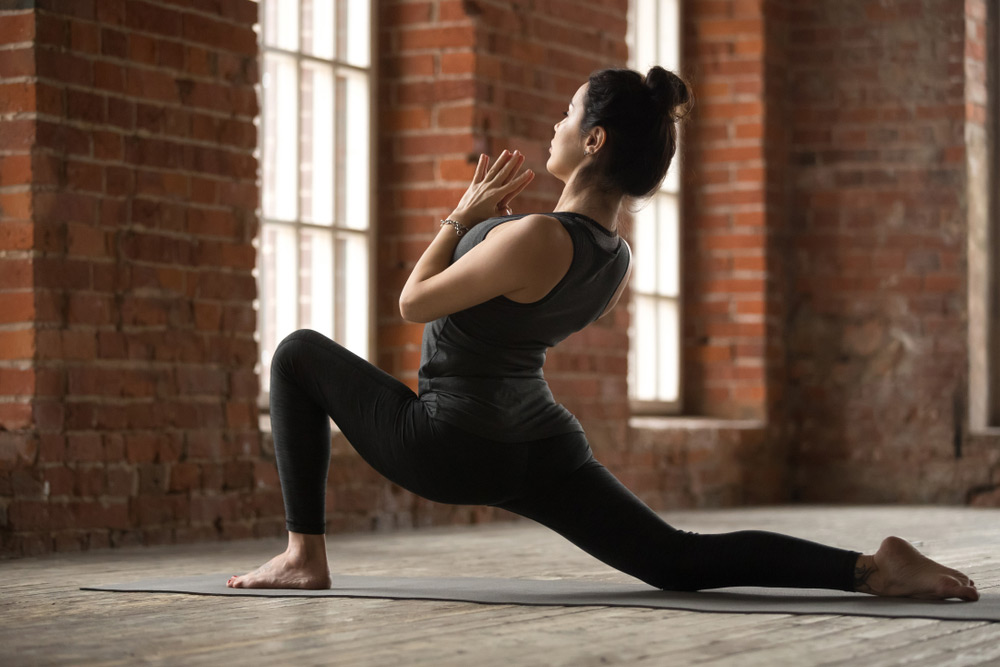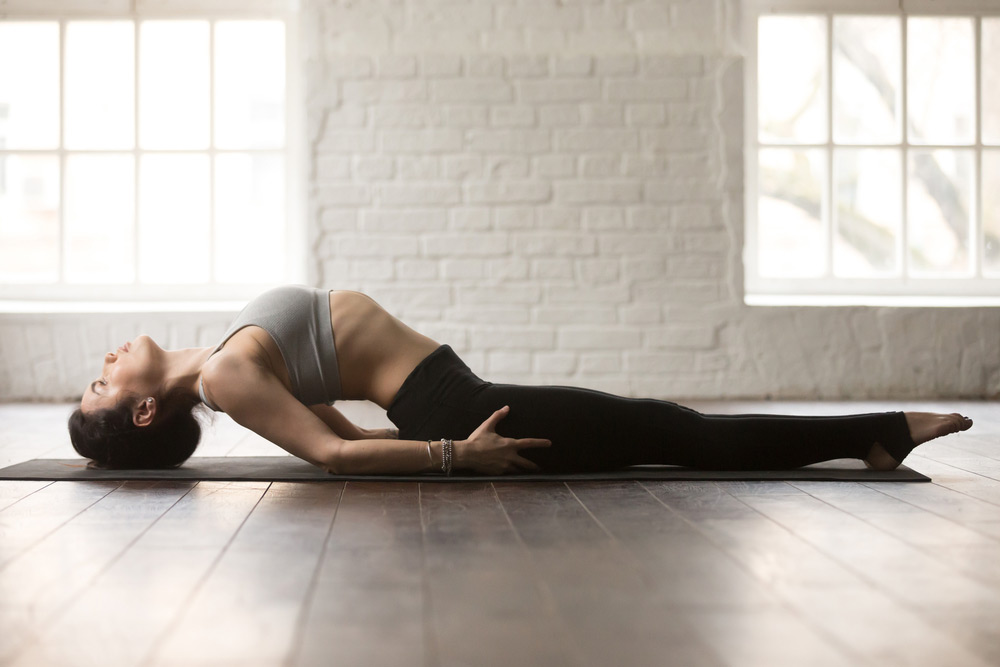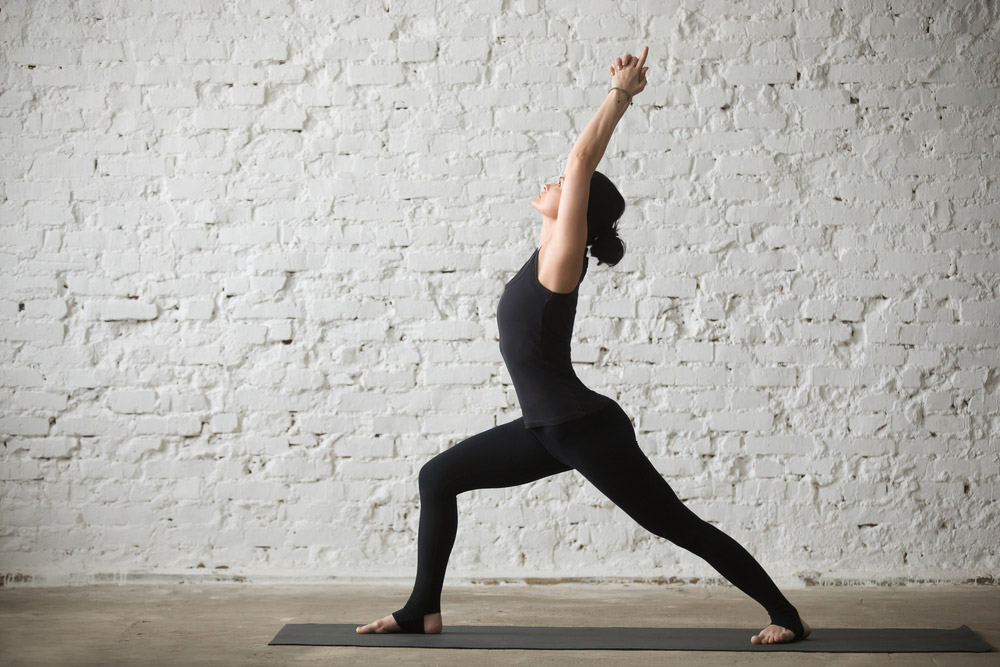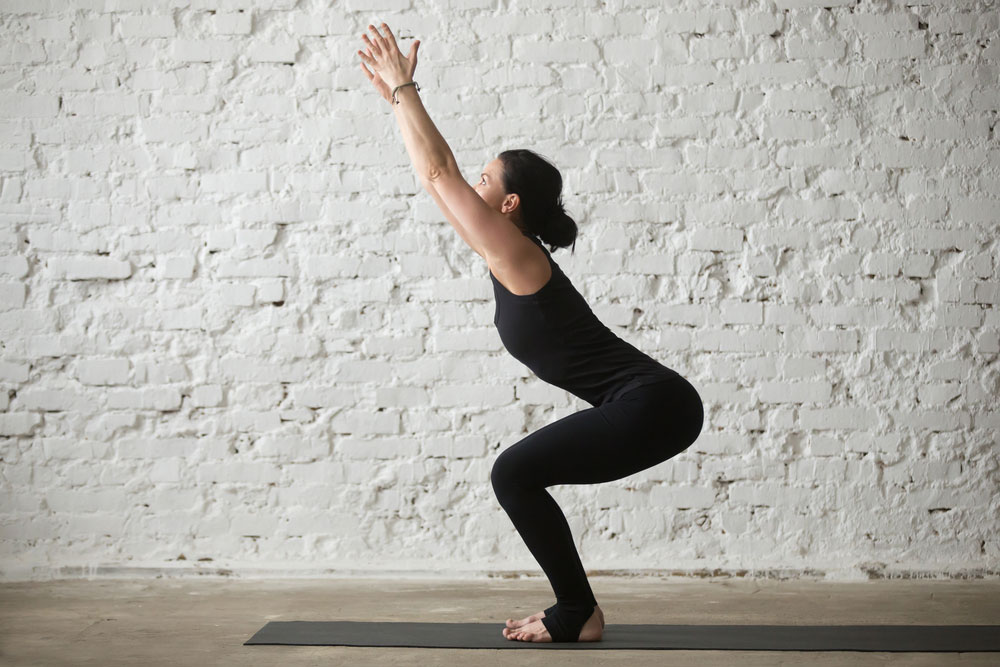Types of Yoga | The 13 Different Yoga Styles
What is Yoga?
Yoga as defined in the Yoga Sutras means "to still the fluctuations of the mind, intellect and ego," or in plainer terms "to become steady and centered within yourself." Taken literally, the Sanskrit word yoga itself means "the union of the soul with its higher self or ultimate source of consciousness."
Types of Yoga
The tradition of yoga practice is thousands of years old, so no one can technically copyright any yogic posture. However, the methods and techniques of practicing are as numerous as the personalities of those who practice yoga. Here we've put together the 13 most popular yoga types for you to help you decide which ones may be best for you.
Be adventurous and try a few different yoga styles to see what you like. Even the most experienced yogi can always use a different perspective now and then to enhance their practice.
1. Hatha Yoga
The term Hatha Yoga originally refers to every kind of physical yoga posture, and the term is thousands of years old. Today in the United States, however, many people seek to develop their own personal styles of practicing these postures and copyright these styles.
When you hear a class described as Hatha Yoga style today, it often refers to practicing yoga postures slowly with careful awareness of the movements. There are no fixed sequences or specific breathing patterns typically associated with a modern Hatha Yoga class.
Some teachers will focus on breathing, and some will focus only on working the muscles in the postures. Students describe these classes as excellent for beginners and slower-paced than Vinyasa and Ashtanga Yoga classes.

Popular Hatha Yoga Poses
2. Iyengar Yoga
Sri K. Pattabhi Jois and B.K.S. Iyengar were both yoga students of the same yoga teacher: Krishnamacharya in Mysore, India. However, they both created different styles of practicing yoga based on their personalities and individual experiences. Sri K. Pattabhi Jois developed schools of Ashtanga Yoga, described further below.
B.K.S. Iyengar went on to develop a yoga style that could help everyone, especially people with illnesses and injuries because he learned how to recover from many health problems of his own through yoga.
B.K.S. Iyengar began teaching yoga in 1936, and he founded his first Ramamani Iyengar Memorial Yoga Institute in Pune, India in 1975. Now Iyengar institutes have come up all over the world. The Iyengar style has become famous for its creative use of yoga props to help students of every level achieve some variation of virtually every yoga posture.

In this tradition, teachers give the alignment of the body in each posture extra attention to prevent injuries during practice. Iyengar teachers are available at many different levels and require rigorous training over years to become Senior level instructors.
They are also excellent at accommodating students with chronic injuries and other health conditions. In these classes, you can expect to hold poses for as long as you can while making many small adjustments, which greatly improves your endurance.
Popular Iyengar Yoga Poses
3. Kundalini Yoga
Yogi Bhajan established Kundalini Yoga in the United States, founding the Kundalini Research Institute in 1971. His full name is Siri Singh Sahib Bhai Sahib Harbhajan Singh Khalsa Yogiji, and he came from a tradition of Sikh Masters in India. His organization certifies teachers and has opened schools of yoga internationally as well.

The primary focus of Kundalini Yoga is balancing the energies of the subtle nervous system, also known as the chakras and nadis. Classes focus on accomplishing this shift in energy through pranayama breathing techniques, mantra chanting, physical exercises and meditation.
Popular Kundalini Yoga Poses
4. Ashtanga Yoga
The literal term Ashtanga Yoga means the eight limbs of yoga elaborated in Patanjali's "Yoga Sutras," written thousands of years ago. Therefore, almost every yoga teacher in every yoga school has some connection to this tradition.
In the United States, however, those who mention Ashtanga Yoga are often referring to the school created by Sri K. Pattabhi Jois, who studied under Iyengar's teacher in Mysore. The first school of Sri K. Pattabhi Jois was the Ashtanga Yoga Research Institute, or "AYRI," founded in Mysore, India around 1948. His schools have spread out internationally as well.
Ashtanga Yoga follows a strict format of six different sequences of asanas that have their basis on the Sun Salutation Sequence. The sequences originally were the subject of study for young boys in an old gymnastics school. You have to master each sequence before moving on to the next one. Ashtanga Yoga focuses on physically challenging you to push past your limits in every class.

While it's not for those who want a relaxing style of exercise, it is good for those who prefer to get a great full-body workout in their yoga practice. While the rooms you practice in are not necessarily hot to begin with, everyone will sweat so much that the rooms do heat up quickly.
You'll need to wear clothing that you don't mind getting soaked in sweat. The teachers focus on helping students go deeper into the postures by sometimes forcefully pushing your limbs as needed. For that reason, it's also not the best style of yoga for people with severe or chronic knee or back injuries.
Popular Ashtanga Yoga Poses
5. Vinyasa Yoga
Vinyasa Yoga describes many variations of "yoga-flow" sequences inspired by the series of postures taught in Ashtanga Yoga by Shri K. Pattabhi Jois as well as the personalized Viniyoga approach of Krishnamacharya's son T.K.V. Desikachar. The main focus of Vinyasa Yoga is linking breathing to each movement while practicing the postures.

General Vinyasa Yoga classes often add additional postures to the standard Sun Salutation sequence. They can practice postures slowly or quickly depending on the needs of the students. You will find many different varieties of Vinyasa Yoga, including some that use more music, meditational aids and chanting in their classes.
Popular Vinyasa Yoga Poses
6. Bikram Yoga
Bikram Choudhury created this "hot yoga" style, basically recreating the environment of his hometown in Calcutta, India. He later founded Bikram's Yoga College of India. While to the Western world it seems like doing yoga inside of a sauna, classroom temperatures of up to 100 degrees and 40 percent humidity or more are everyday living conditions in most of India.

By heating his classrooms, he gave students the advantage of loosening up their muscles a little faster and sweating much more. As a result, students often leave class experiencing something akin to a "runner's high." Bikram classes traditionally last for 90 minutes during which you focus on 26 fixed postures that you perform twice. It also includes breathing sequences. For those who are stiff, classes in the afternoon are often ideal.
General Cautions for Bikram Yoga:
Take care to drink lots of water before and after practice. You also need electrolytes to help prevent heat exhaustion. If you experience dizziness, nausea of hallucinations, then step out of the class and stop for the day.
These symptoms of hyperthermia could signal that this style of yoga is not for you. Furthermore, do not practice Bikram Yoga if you've had your lymph nodes surgically removed. The increased flow of lymph fluid in class could make your limbs swell up.
Popular Bikram Yoga Poses
7. Yin Yoga
Yin Yoga came from Paulie Zink's studies with Martial Arts and Chi Kung Master Cho Chat Ling in China. Paulie studied Taoist Chi Kung with his master privately for 10 years. Using what he learned and combining it with yogic postures, he created what he called "Taoist yoga." Paul Grilley then learned this yoga style from Zink in the 1980s. Paul Grilley went on to teach Sarah Powers, and she later changed the name to Yin Yoga since it uses the principles of Yin and Yang from the philosophies of Traditional Chinese Medicine.

In Yin Yoga classes, you hold each posture for up to five minutes at a time. Here the goal is to open the deeper connective tissues in the joints and develop a deeper state of calm. This method can help you release tension in many other subtle energy channels or meridians in the body. The practice gives a very meditative experience.
Yin postures look the same as other yoga postures but have different names to emphasize the different focus and variations of the pose.
Popular Yin Yoga Poses
8. Restorative Yoga
Since B.K.S. Iyengar did the most work of popularizing the use of props in yoga -- especially for yoga-therapy sessions -- most people credit him as the founder of what has become Restorative Yoga.

The goal of this style of yoga is purely to de-stress the body and mind. You spend a greater amount of time in fewer postures during classes, and you always use props that make the poses more relaxing.
Yoga props include blankets, belts, bolsters and eye pillows. It is different than Yin Yoga in that Yin Yoga focuses on letting gravity do more of the work rather than using props simply to relax in the postures.
Popular Restorative Yoga Poses
9. Prenatal Yoga
Prenatal Yoga is a special exercise and stretching program for pregnant women of all trimesters. All pregnant women should go to Prenatal Yoga rather than other yoga classes because not every yoga posture is safe for women to practice while pregnant.

Prenatal Yoga teachers have the expertise necessary to help you work with your body safely according to your specific needs. It helps prepare women to have an easier delivery by focusing on toning the pelvic floor. Classes also teach simple breathing exercises that make labor easier to bear. These gentle stretches also help release the tension in the body that builds up from carrying a child to term so that women feel better during pregnancy.
Popular Prenatal Yoga Poses
10. Anusara Yoga
Founded in 1997 by a Senior-level Iyengar teacher, Anusara Yoga became most popular in California where it started. These classes combine the use of yoga props just like Iyengar classes. However, they focus more on creating flow sequences and promoting a lighthearted atmosphere in the classroom.

Their Vinyasa flows can be very challenging. Teachers also describe the yoga postures in their vocabulary with new terms that take some getting used to if you are familiar with Sanskrit and other common Western translations for the names of yoga postures. They emphasize the mind-body-heart connection.
Teachers may stop during class to gather everyone around a student while the instructor explains the pose in great detail. Classes include devotional chanting, partner work, linking postures to the breath and meditation.
Popular Anusara Yoga Poses
11. Jivanmukti Yoga
Sharon Ganon and David Life founded the style of Jivanmukti Yoga in New York by 1984, and it draws inspiration from other yoga teachers like Swami Nirmalananda, Sri K. Pattabhi Jois and Shri Brahmananda Sarasvati.
The Sanskrit word Jivanmukti literally means "the freedom of the individual soul," although it has many other deeper meanings as well. This style falls mostly under the umbrella of Vinyasa flow-style yoga. However, they also incorporate elements of Ashtanga/Mysore, Prenatal, Restorative and Hatha Yoga in their wide variety of classes.

Classes typically begin and end with Sanskrit chanting, as well as meditation. They teach the yoga postures in a way that's often physically challenging, so beginners should take care to make sure that they are coming to a beginner's class beforehand to prevent injuries.
Practitioners often describe classes as tough, athletic workouts that make you sweat while also helping you to destress. The teachers have a hands-on approach and also try to incorporate more of traditional yogic philosophy principles into their classes too.
Founders Sharon Ganon and David Life have both written many books on yoga, and their long-time students often advocate making greater lifestyle changes to complement your yoga practice, such as vegetarianism.
Popular Jivanmukti Yoga Poses
12. Aerial Yoga
Christopher Harrison is a Broadway performer who brought his training in acrobatics and gymnastics to yoga in the 1990s, officially creating the worldwide fitness chain known as the AntiGravity Yoga program by 2007. Many other variations of this style have come into popularity, including Air Yoga, Unnata Aerial Yoga and other mobile systems from OmGym and Gorilla Gym.

This practice blends yoga postures with principles of Pilates, gymnastics, calisthenics and acrobatic training methods to build extra core and upper-body strength. In these classes, you suspend your body above the ground in a type of hammock that resembles something you might see in a Cirque du Soleil performance.
The advantages of Aerial Yoga include being able to decompress the spine and reduce pressure on the joints while getting all the benefits of inversions. Many have found relief from chronic back pain through this approach. The hammock is a highly versatile yoga prop to help you go deeper within poses. The practice can be challenging and soothing as well.
Popular Aerial Yoga Poses
13. Acro Yoga
Jenny Sauer-Klein and Jason Nemer founded Acro Yoga in 2003. They used their experience in gymnastics and circus training to develop the program that has now become an international movement.
In Acro Yoga, the practice focuses on doing more inversions and preparing your body for inversions by working with a partner to go deeper into the postures. Partners take turns serving as the "base" to support their partner while the other becomes the "flyer" who often rests their weight on the feet of their partner while practicing variations of inversions. Classes also include spotters to help ensure the safety of everyone.

Practicing as the base is excellent for increasing your core strength and toning your legs and hips as you hold someone up on your feet while lying on your back. Practicing as the flyer greatly increases flexibility and overall body strength as you balance on your partner's feet and hands. Both partners build trust for each other during class, which helps people learn to develop relationship skills in other areas of their lives as well.